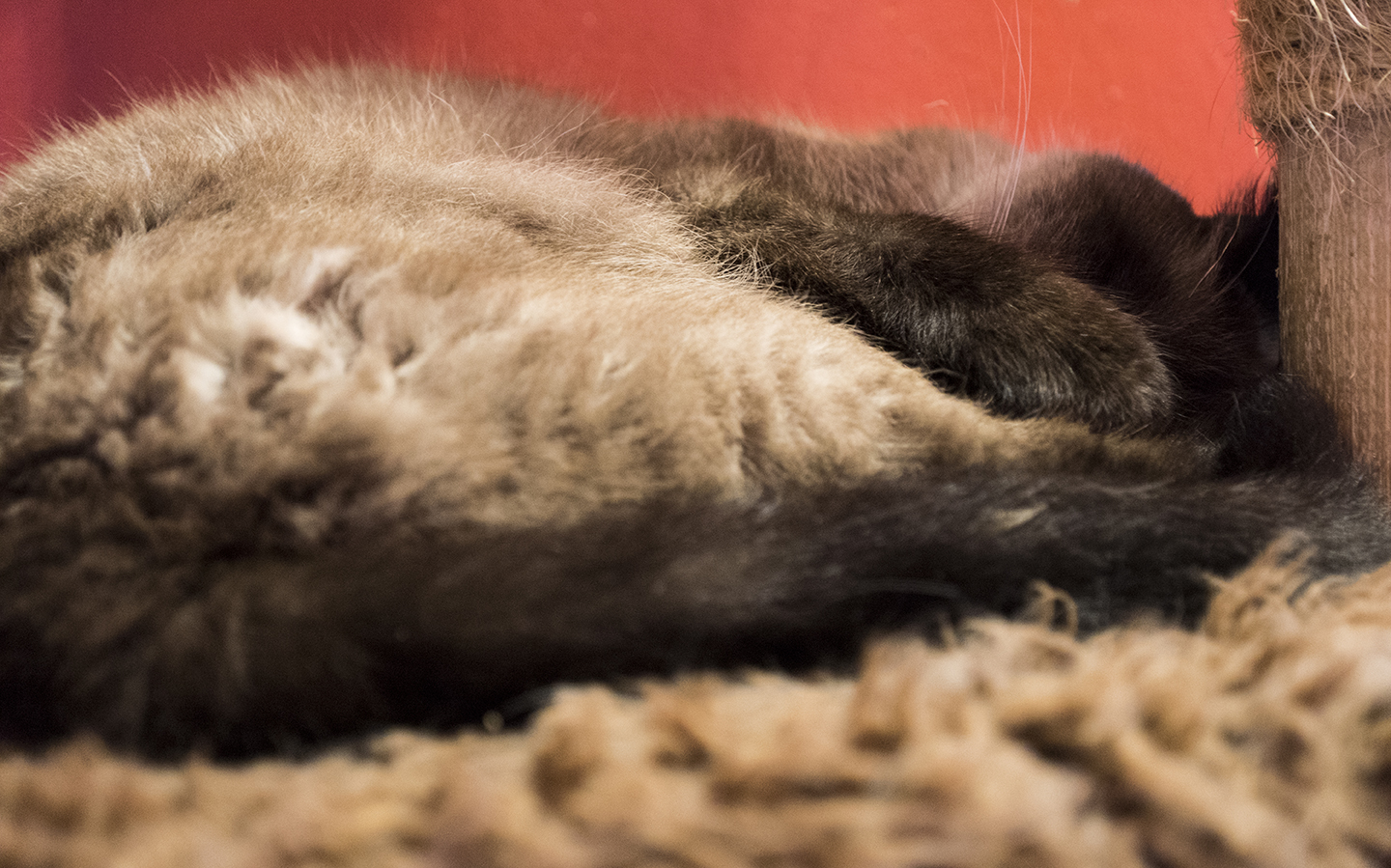Fleas and Worms
Fleas and Worms
Fleas and worms are two of the most common parasite infections in pets in the UK. Fleas can be picked up by your cat from walking through the garden and once on your pet they are then in your home.
Fleas can also carry worms, tapeworm in particular, which infects your cat and can cause symptoms such as diarrhoea.

Where do fleas live?
Despite common beliefs fleas don’t actually live on your pet and instead live in the environment such as in carpets, beds, sofas and they thrive on warm dark places to live. Fleas only jump onto your pet to feed.
If you treat your cat for fleas you must also treat the environment in which they live. This includes washing beds and treating carpets and soft furnishings with pesticides.
Where do worms live?
Worms live in the intestines of your cat. They have a mucous coating which means that the cats digestive system cannot break down the organism there-
fore enabling it to survive inside your cat for a very long time. There are two common types of intestinal worms: tapeworm and roundworm. Cats infected with tapeworm will often have small segments of worms hanging from their anus.
How do you treat fleas and worms?
There are many products available on the market today. Some require veterinary prescriptions others do not. Some products are given orally in tablet form and others are spot on treatments that you apply to the back of the neck of your cat.
How do I know what product to use?
Your vet will always be able to offer advice on what products are safe to use on your cat. Nowadays there are also a number of online veterinary pharmacies who also offer a range of prescription and non prescription products to use.
Before purchasing you should always ensure that the product is suitable for cats and that it is safe for the weight of your cat.
Are there any products I shouldn’t use?
We recommend that you always purchase flea and worm medications from either vets or pharmacies and that you do your research on the best product to use for your cat.
We would never recommend the use of off the shelf flea and worm treatments as the occurrence of severe reactions to these products is far greater than safer veterinary products. Many cats suffer from severe burns or poisoning and death from the use of off the shelf products.
How can I tell if my cat has fleas?
The best way to tell if your cat has fleas is to inspect its coat thoroughly. If you have a severe infestation you will be able to see them running over the cats body. Especially under the neck and legs. Combing through the coat with a flea comb and place the dirt on a white damp tissue. This will allow you to see if it is flea dirt as it will turn red when in contact with moisture.
How can I tell if my cat has worms?
Worms are harder to detect but there are a few tell tale signs; swollen stomach, diarrhoea, especially with blood in it, being sick with white foam discharge, pieces of wriggling tape worm around the anus area of the cat.
If your cat has fleas there is a good chance its also infected with worms too so always treat for both parasites. Some products treat both fleas and worms.
How often should I treat my cat?
You should always follow the advice of your vet and of the product you have chosen to use which will be on the leaflet.
If your cat goes outdoors we recommend a year round preventative treatment regime that should ensure your cat remains free of fleas and worms.
Where to Shop
You can buy your flea and worm treatments from any veterinary practice who will ensure you give the correct product and dose for your pet.
You can also shop online at sites such as:
There are a wide range of vet grade products available without prescription including Frontline, Effipro, Fipronil, Advantage and others.
To find your nearest veterinary practice, please consult the RCVS website.
